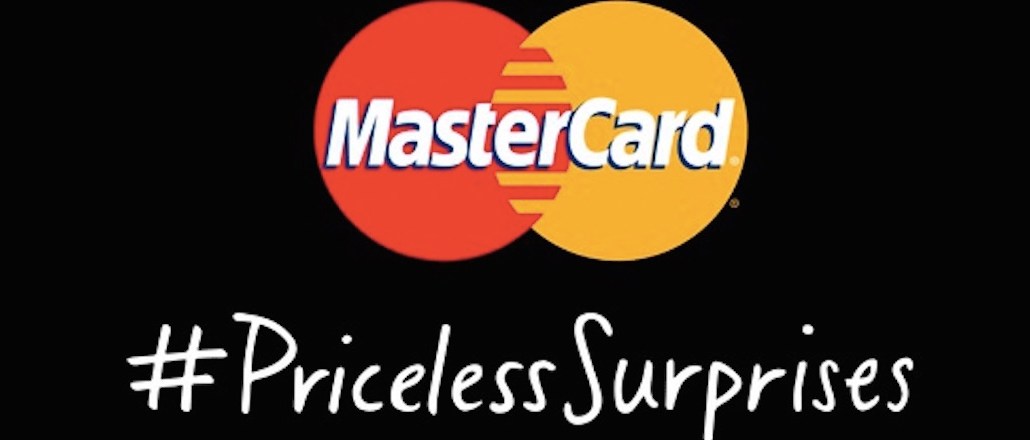
MasterCard is on a mission to transform its image from payments company to lifestyle brand. To its global chief marketing officer Raja Rajamannar’s mind, the evolution is necessary for it to stay afloat through the next digital marketing tsunami.
Speaking to Digiday between appearances at Dmexco in Cologne and Advertising Week in New York, Rajamannar stressed: “We can’t just claim to be an experiential brand, we must prove it.” He bills MasterCard itself as a “technology company that happens to be in the business of moving data and money.”
A breakdown of the company’s transformation battle plan:
Creating compelling, short content
Brands have increasingly been adding content creation to their core competencies — and MasterCard is no exception: the company launched its own “newsroom” in 2013. However, Rajamannar said this is just one element of its wider strategy to stand-out to consumers.
The volume of free online content and proliferation of mobile devices has made content “snacking” more commonplace. And marketers have their work cut out to get noticed in a non-interruptive way.
“Consumer attention spans are dropping daily, due to the sheer volume of messages. It’s just the nature of the beast, so our strategy must centre on how to hold their attention. That’s a fascinating challenge,” he said.
It has breathed new life into its longstanding “Priceless” campaign, with its Priceless Surprises and Priceless Cities platforms, both geared toward engaging consumers across nine “passion points,” such as sports, entertainment, music, arts, shopping, travel and sustainability. The “Surprises” range from digital downloads of songs to bigger “one in a lifetime experiences” such as being featured in a Broadway play.
With Priceless Surprises it has moved away from set-play, long-term campaign planning to cater to people’s ‘always-on’ media habits. In February it involved its brand ambassador Usher in creating one of these moments for a targeted group of the artists’ superfans (see video below).
“We want to transform into an experiential, lifestyle brand, and our single biggest priority is how to make that happen,” added Rajamannar.
Experimenting with wearable devices
MasterCard sees extensive growth coming for wearable devices — namely Apple and Samsung’s smartwatches and payment propositions. The company is said to be working on a system which uses a customer’s heart ECG pattern to identify them and authenticate payments. The Apple watch, or other wearables with heart rate monitors could do this, removing the need to use a pin code. “Wearables have taken off, and the integration of payments is just the start. The wearable wave is coming and we want to ensure we are part of that wave and that we are ready to ride it,” said Rajamannar.
Its mobile wallet offering Masterpass could do with some more attention though, having not had strong take-up in Europe, according to Forrester senior analyst Jacob Morgan. “It faces stiff competition from PayPal and Apple Pay here. Although MasterCard integrates with Apple Pay it will not get the same brand primacy within those products. When you’re within someone else’s service like Apple or Samsung Pay your brand primacy naturally isn’t as strong,” he said.
Finding “extraordinary” talent
Like pretty much all businesses, getting the right marketing talent in-house is a pressure point for MasterCard.
“To bring about all these significant transformational changes we need extraordinary talent, we need people not only skilled in the traditional marketing but the digital, data and analytics side as well. Finding people who have both, and the savviness of both sides is a difficult,” he said.
This extends to his own position: Rajamannar believes the role of the CMO has changed beyond recognition. “A CMO is not someone that can treat advertising as a tick-box process. They have to tangibly drive business with measurable results, and connect the dots between marketing and the rest of the business, and they must also build sustainable platforms. Priceless Surprises is about moving brand business, we’re not marketing for marketing’s sake,” he added.
Thinking video, not necessarily TV
MasterCard is among the brands shifting traditional TV spend over to digital platforms, and has tripled its digital spend in the last two years. Although he wouldn’t release exact figures, the company’s domestic media spend has been estimated to be approximately $118.2 million in 2014, according to Kantar Media.
“They say a picture is worth a 1,000 words, well I think a video is worth 10 million words. It will be a critical part of our strategy. And by video I mean everything — could be across TV, tablet or phone. We’re shifting budget from TV to digital due because we can refine our targeting. But traditional TV won’t disappear because it’s still so effective for achieving instant scale.”
Going programmatic
Although programmatic advertising is a major part of MasterCard’s media mix, Raja suggests the overall topic has become somewhat overblown. “Programmatic has accrued a bit of a cult following. But really it is nothing more than a methodology by which you can bid for space in real time and drive efficiencies.” A report from AppNexus out this week drew attention back to the fact that there is a major lack in understanding still from marketers and agencies surrounding programmatic.
“We have invested time in looking into it. We understand what’s inside the black box,” said Rajamannar. “And it is definitely changing the way media planning is done and evaluated, and will continue to spread into other areas like out-of-home, and TV.”
More in Marketing

‘Still not a top tier ad platform’: Advertisers on Linda Yaccarino’s departure as CEO of X
Linda Yaccarino — the CEO who was never really in charge.

Questions swirl after X CEO Linda Yaccarino departs from the platform
Her departure marks the end of two tumultuous years at the platform.

Creator marketing has the reach — CMOs want the rigor
The creator economy got big enough to be taken seriously.





